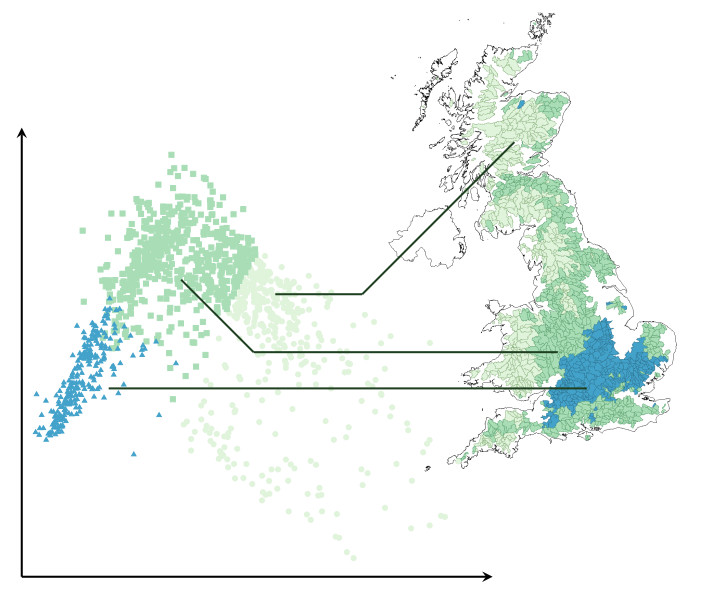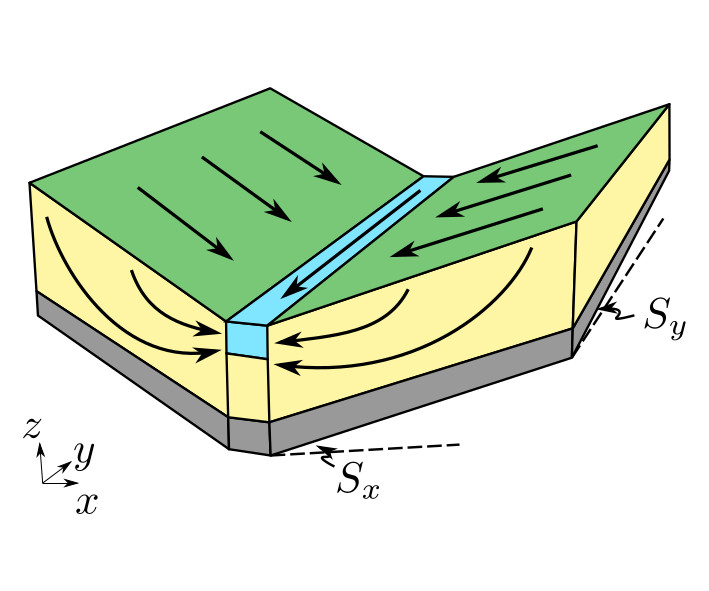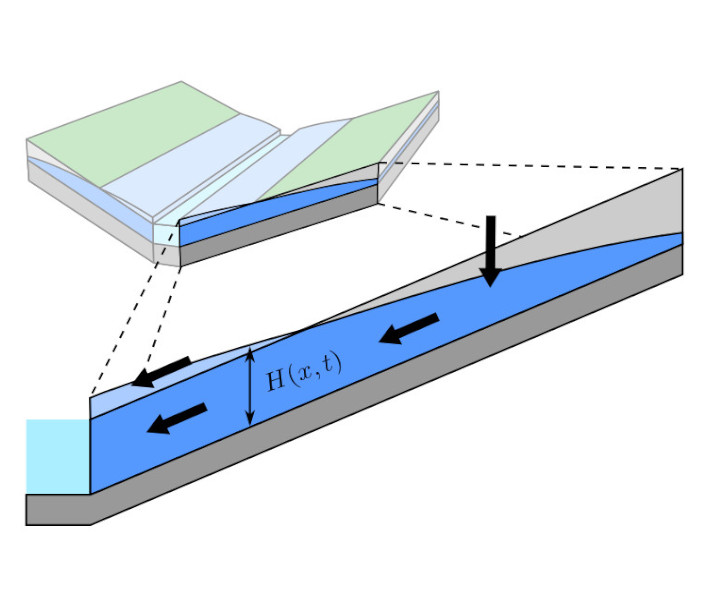PhD project: Mathematical framework for the unification of rainfall-runoff models
Primary supervisor: dr Philippe Trinh
Secondary supervisor: prof. Paul Milewski

by Phillip Andrew Carl Taylor
The main goal of the PhD project is to develop a rigorous mathematical framework in order to better understand the relations between different classes of models. We develop simple benchmark scenarios for coupled surface-subsurface flows. Extensive data analysis of UK catchments allowed us to estimate key non-dimensional quantities affecting the flow. The subsequent study of these models using asymptotic analysis allows us to compare their behaviours in certain limiting scenarios and extract key factors affecting the formation of peak river flows.
This intercomparison of asymptotic behaviour of different classes of models can be used as a complementary tool to computational methods for assessing flood model accuracy, and can be used to better understand their applicability limits.
Below you can find links to articles summarising major part of the research project, watch video presentation on investiagtion of reduced catchment models prepared for 2022 British Applied Mathematics Colloquium (BAMC) and a poster summarising key elements of our framework from BAMC 2021.
Publications
The main part of PhD is summarised in three-part article "On the development and analysis of coupled surface-subsurface models of catchments" currently available on Arxiv, which is the first study, in which coupled surface-subsurface catchment model was solved for a benchmark scenario analytically. Links are provided below.In Part 1 we estimated typical size of physical catchment parameters characterising UK catchments. In Part 2 we formulated a simple 3D catchment benchmark model and used estimates from Part 1 to show that the model can be reduced to a 2D form. Finally, in Part 3 we showed that in the case of overland-dominated catchments the 2D model can be further reduced to 1D form and found its approximated solution. The analytic hydrograph obtained this was can be usen in future studies to understand limitations of other rainfall-runoff models.
 Part 1. Parameter estimation and sensitivity analysis of catchment properties (Arxiv)
Part 1. Parameter estimation and sensitivity analysis of catchment properties (Arxiv)
 Part 2. A three-dimensional benchmark model and its properties (Arxiv)
Part 2. A three-dimensional benchmark model and its properties (Arxiv)
 Part 3. Analytical solutions and scaling laws (Arxiv)
Part 3. Analytical solutions and scaling laws (Arxiv)